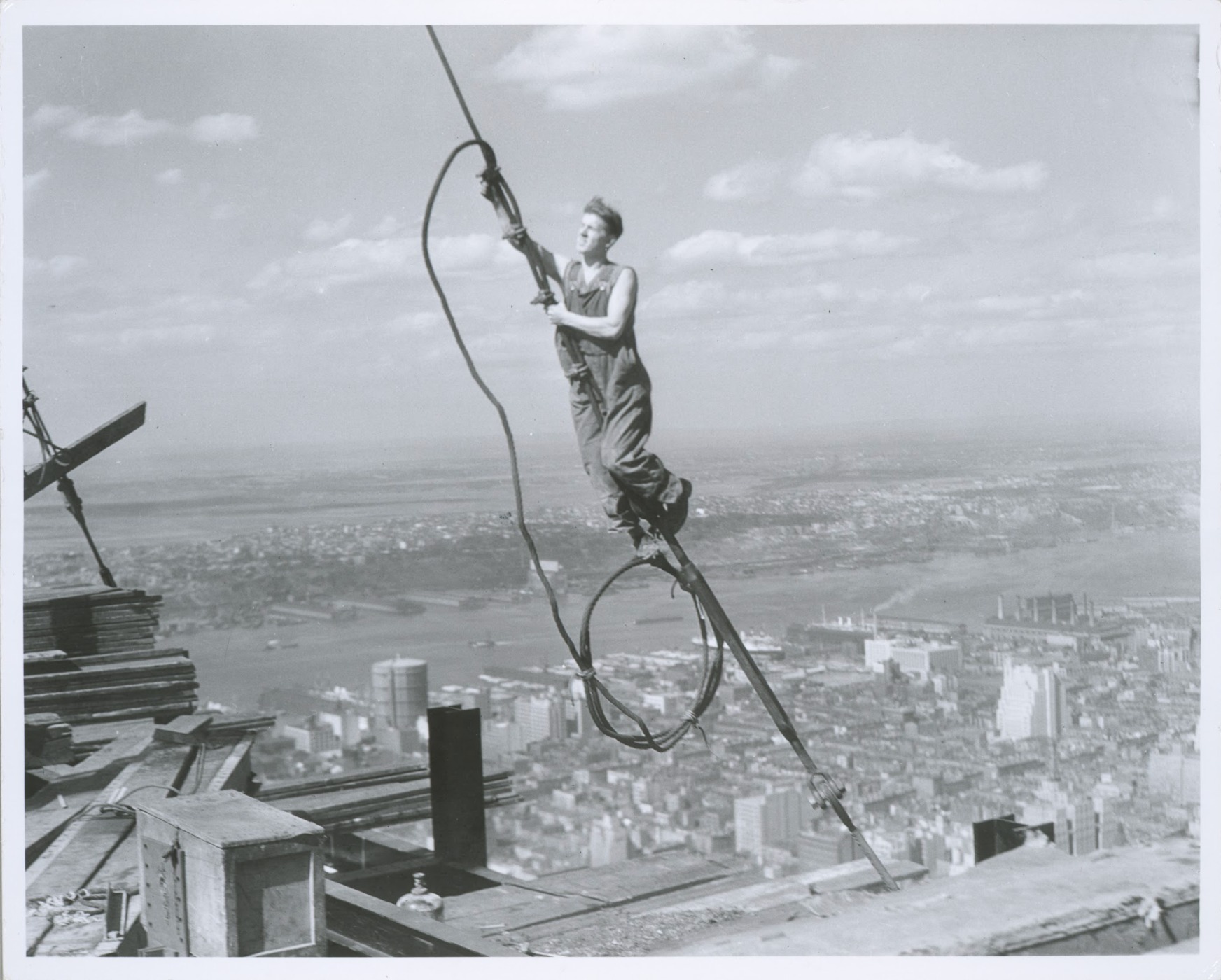What Hidden Meanings Lie Behind Lewis Hine’s 1931 Masterpiece, “Icarus Atop Empire State Building”?
“If I could tell a story in words, I wouldn’t need to lug around a camera.” – Lewis Hine. The photographer dedicated much of his life to capturing the struggles and triumphs of the American working class. His work often spoke louder than words ever could.
When Hine was commissioned to document the construction of the Empire State Building, he brought his keen eye for human emotion and detail to this monumental task.
His images are famous for capturing workers high above the city, seemingly unfazed by the immense risks they faced each day.
Among the many photos Hine took of the Empire State Building, one stood out as a favorite among the public. It perfectly encapsulates the spirit of the workers and the awe-inspiring scale of the project, making it a timeless piece of history.
The artful brilliance behind the captivating photograph

In 1931, the City of New York commissioned Lewis Hine to document the construction of the Empire State Building, resulting in the iconic photograph known as “Icarus.”
This image stands out from Hine’s other work on social documentary, as it captures a subject and a cityscape in such a grand fashion.
Hine was drawn to the “sky boys,” as he called them—workers laboring at incredible heights to construct the steel frame of the world’s tallest building at the time.

Here, he captures a single worker perched precariously on a high section of the Empire State Building, seemingly suspended between earth and sky. In the photograph, a lone worker is seen precariously perched high above New York.
The worker, clad in typical laborer attire of the era, connected two cables with one hand while gripping a steel beam with the other.

The composition of the photo draws the viewer’s attention to different elements—the breathtaking cityscape, the towering structure, and the solitary worker.
His focus on the task at hand contrasts sharply with the vast urban landscape below, creating a sense of both awe and tension. The image not only captures a breathtaking moment but also preserves a piece of New York’s evolving history.
Why titled “Icarus Atop Empire State Building”

The image captures a steelworker, suspended with an air of calm confidence, embodying the spirit of daring innovation, much like Daedalus from Greek mythology.
In the myth, Daedalus successfully navigated between the sea and sky, while his son, Icarus, flew too close to the sun and met a tragic end.
The optimism in this photo suggests that Hine’s choice of title wasn’t about Icarus’s downfall but rather his youthful audacity and the marvel of flight itself.

By likening the worker to Icarus, Hine adds a layer of dark humor, implying a potential fall. Yet, as we looked deeper into the photo, it became clear that Hine wasn’t highlighting inevitable failure but celebrating the ingenuity and bravery it took to construct the world’s tallest building.
The angle of the shot makes it appear as though the worker is ascending from the city to the sky, pulling himself upward with strength and confidence, much like Icarus’s daring ascent.
Lewis Hine, the masterful photographer

As a powerful advocate for social reform, Lewis Hine used his camera as a tool to shine a light on the harsh realities of urban living. His work focused on the struggles of immigrants living in cramped conditions and the lack of protective labor laws.

Although he spent much of his life in New York, Hine was born in Wisconsin in 1874. The early loss of his father forced him into the workforce at a young age, where he witnessed firsthand the exploitation of child labor.
Determined to make a difference, Hine saved money for college and eventually became a sociology teacher. It was during this time that he discovered photography, realizing that his images could reach and impact a wider audience than words alone.

What makes Hine’s work stand out is his belief that art has a purpose—specifically, to give a voice to those who couldn’t speak for themselves. Through his portraits, he highlighted the struggles of families and laborers, bringing attention to their dire conditions.

His photographs played a significant role in the push for child labor reforms and the establishment of new housing codes, showing just how influential art can be in driving societal change.
The fascinating story of the Empire State Building

Completed in just over a year, the Empire State Building held the title of the world’s tallest structure until 1967. Its immense structure weighed 365,000 tons, 730 tons of stainless steel and aluminum, and 200,000 cubic feet of Indiana limestone and granite.
Today, with a new antenna added in 1985, its height is 1,454 feet (443 meters), making it the fourth tallest building in New York City, the sixth tallest in the United States, and the 43rd tallest in the world.
Even as New York City has continued to evolve around it, this iconic skyscraper has remained a steadfast symbol of the Big Apple for over 90 years.

Rising majestically from the streets of Midtown Manhattan, the Empire State Building is more than just a National Historic Landmark; it’s a defining feature of the city’s skyline, rivaling the fame of bagels and Broadway.
Though it was originally intended as a corporate office building, the Empire State Building quickly captured the imagination of Hollywood.

Just a few years after its opening, the building featured prominently in the 1933 monster classic King Kong, where the iconic scene of the giant gorilla clinging to its spire while battling biplanes became an enduring image in film history.
Since then, the Empire State Building has appeared in over 90 movies, including beloved romances like An Affair to Remember and Sleepless in Seattle, further cementing its place as a cultural and architectural landmark.

